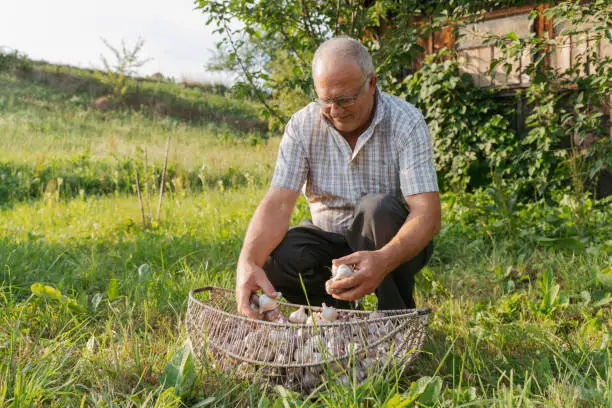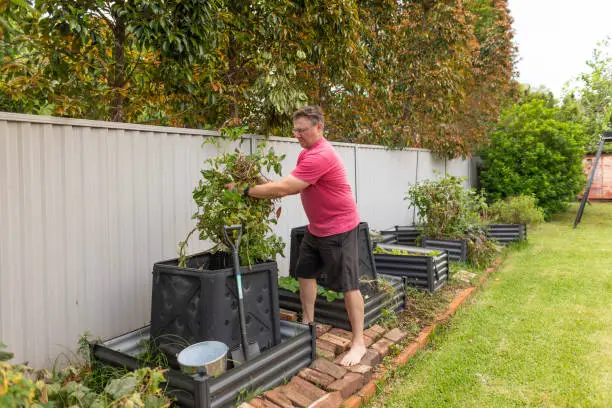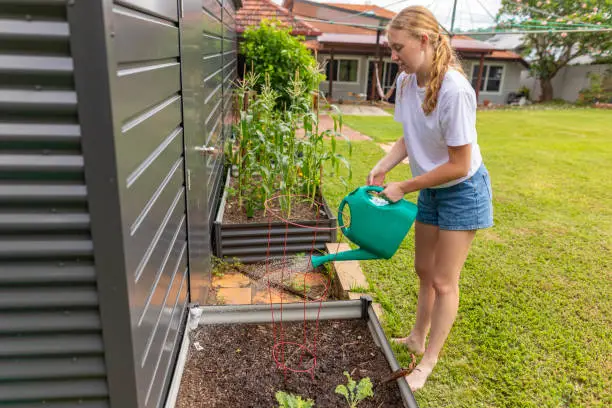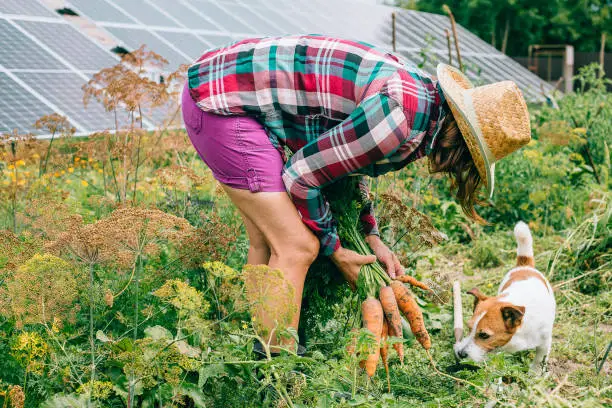Streamlining Your Backyard Homestead with Technology
Traditional knowledge combined with modern technology gives backyard homesteading an extraordinary advantage in self-sufficiency. The digital age has dramatically benefited homesteading, which traditionally relied exclusively on anecdotal information passed down through generations. Apps and software improve homesteading efficiency and productivity by changing activities.

Apps for every aspect of homesteading are driving this change. These computerized tools arrange and analyze operations like garden planning and animal management that were previously done intuitively. Technology helps homesteaders make informed decisions, utilize resources, and reach sustainability goals more precisely.
Garden planning software transforms household food output. These apps can provide crop rotation ideas, companion planting benefits, and local climate-based planting dates. Entering your garden space dimensions, you can get yield-maximizing tips for tiny homesteaders. This exact planting method boosts food yield and domestic ecological health.
I am homesteading animal husbandry benefits from livestock management apps. Tracking livestock health, breeding, and productivity can be difficult, but these apps ease data management by reminding of immunizations, feed schedules, and other essential care points. This digital ledger of animal health and productivity organizes livestock management, guaranteeing no detail is neglected and animal welfare is excellent.
Beyond the garden and barn, homesteading entails budgeting, expense tracking, maintenance, and repair scheduling. Financial management software designed for homesteaders allows them to track resources, plan for future spending, and operate within their means. Task management apps can also organize daily, weekly, and monthly homestead duties to avoid missed tasks.
Homesteading incorporates technology into teaching. Apps and websites offer tutorials, training, and guidance on every element of homesteading. Because knowledge has been democratized, homesteaders may learn new skills, solve problems, and interact with a worldwide network of like-minded people. Online sharing of experiences and solutions has developed a thriving and supportive homesteading community that values collaboration and innovation.
However, homesteading with technology has its drawbacks. Some find software and technology expensive, and using them successfully requires a learning curve. The potential of technological addiction should also be considered. Technical challenges, data loss, and overuse of digital tools can make homesteading less natural. Homesteaders should use technology to enhance, not replace, their knowledge and skills.
To overcome these issues, technology should be used in conjunction with homesteading. Homesteaders can combine apps and tools to improve decision-making, efficiency, self-sufficiency, sustainability, and joy in homesteading.
Homesteading has limitless potential as technology advances. Technology in renewable energy, water conservation, and sustainable building materials can enhance homesteading. Homesteaders may improve their practices, lessen their environmental impact, and establish resilient, thriving homesteads by staying current on new tools and technology.
Finally, apps and software change how small homesteads are designed, administered, and perpetuated. These digital technologies give homesteaders unprecedented precision, efficiency, and understanding, helping them succeed. Homesteaders may boost productivity and sustainability by deliberately integrating technology into their daily routines, assuring a bright future for themselves and their community.
Integrating apps and software into small homestead management requires examining how these technologies affect homesteaders’ sustainability and self-reliance. Digital tools improve homesteading and environmental conservation. Technology helps homesteaders create profitable, sustainable ecosystems by optimizing resource utilization and decreasing waste.
Technology also makes knowledge and resources more accessible to potential homesteaders. People who needed more means or expertise to start homesteading now have the tools and help. By democratizing homesteading, a community of sustainable and environmentally conscious people grows.
Technology will play a more significant part in homesteading in the future. Renewable energy, water conservation, and bio-intensive gardening will make homesteading easier and more sustainable. Technology’s benefits must be balanced with homesteading’s hands-on, nature-connected nature. By balancing this, homesteaders can use technology to improve their quality of life and create a more sustainable and resilient future.
Smart Growth: IoT Devices in Urban Homesteading Revolution
The Internet of Things (IoT) has upgraded backyard homesteading from traditional urban agriculture to a high-tech business. The IoT’s network of internet-connected gadgets changes urban small-scale agriculture management. This technological advancement gives urban homesteaders new tools to improve production, save resources, and monitor their homesteads with unprecedented precision.
IoT devices in urban homesteading allow for careful agriculture and livestock management. Sensors in the garden can measure soil moisture, temperature, and light intensity in real time to advise watering, planting, and harvesting decisions. This data-driven strategy gives plants what they need when needed, resulting in healthier crops and higher yields without wasting water and other resources.
The benefits of IoT technology extend to livestock management. Smart gadgets can monitor animal health by tracking their movements, diet, and body temperature. Typically available via smartphone apps, this information helps homesteaders quickly resolve issues, assuring livestock health and quality. Remotely controlling automated feeding and watering systems simplifies urban homesteaders’ daily routines and frees up time for other duties.
In urban homesteading, IoT devices help control pests and diseases. Early detection sensors can alert homesteaders to pests and plant diseases, allowing them to respond quickly. This proactive strategy prevents crop damage and decreases chemical use, encouraging organic and sustainable agriculture.
IoT devices also affect energy management. Smart controllers optimize solar panels and rainwater collection systems to efficiently meet the homestead’s energy and water needs. These technologies can adapt to weather forecasts and use patterns to preserve resources and reduce the homestead’s environmental impact.
However, urban homesteading with IoT technology has its drawbacks. These gadgets demand technical expertise and money to set up and maintain, and their data may be exposed to cyberattacks, raising security and privacy concerns. Despite these issues, IoT technology’s resource optimization and operational efficiency benefits are enticing.
IoT technology encourages urban homesteaders to innovate and develop. These gadgets generate a plethora of data that might inform new agricultural methods tailored to each property. Through this iterative process of learning and adapting, urban homesteading becomes more productive, sustainable, and robust to environmental changes.
IoT benefits urban homesteading communities. Technology may unite homesteaders around shared aims and problems by sharing data and experiences. Online platforms and social media groups improve the urban homesteading community and promote sustainability by sharing data-driven insights and new solutions.
Looking ahead, IoT technology in urban homesteading has excellent potential. Sensor technologies, artificial intelligence, and machine learning might make IoT devices more intuitive, efficient, and homesteader-friendly. As technology advances, urban homesteaders will change how they manage resources, engage with their environment, and support their communities.
In essence, IoT gadgets alter urban homesteading. With these technologies, urban homesteaders can gain unprecedented control and efficiency. Despite the hurdles, embracing new technologies improves resource conservation, production, and community engagement. IoT gadgets in urban homesteading will make urban agriculture more innovative, sustainable, and connected.






Leave a Reply